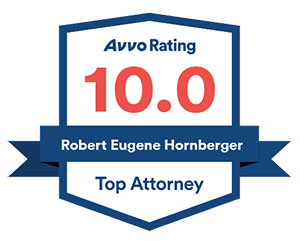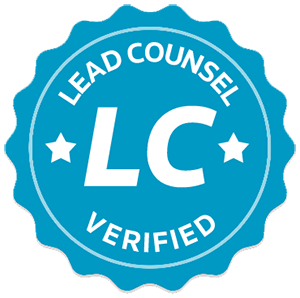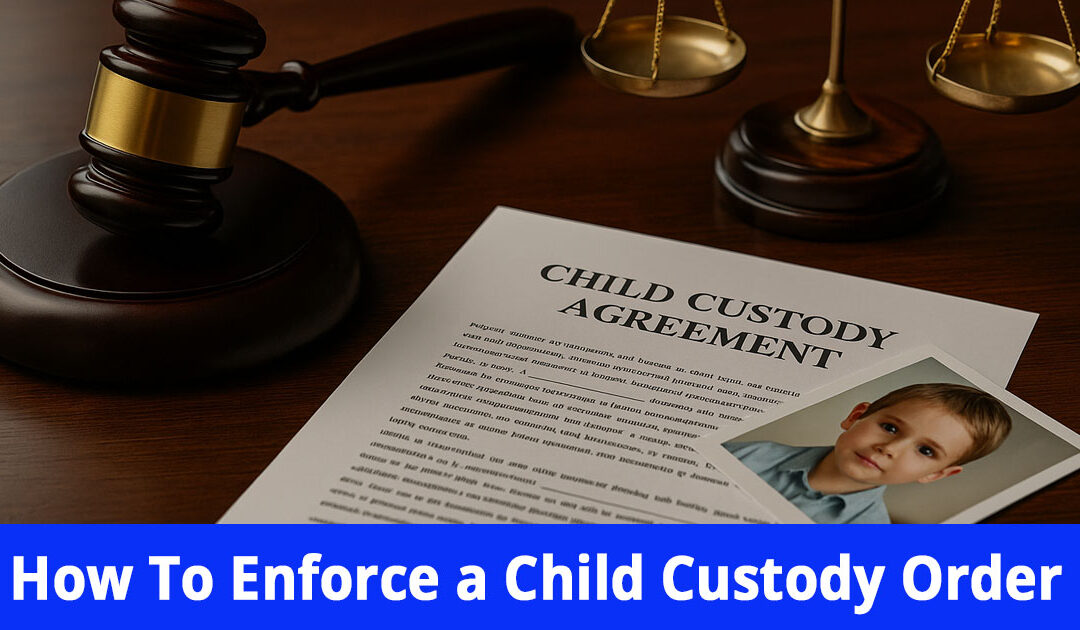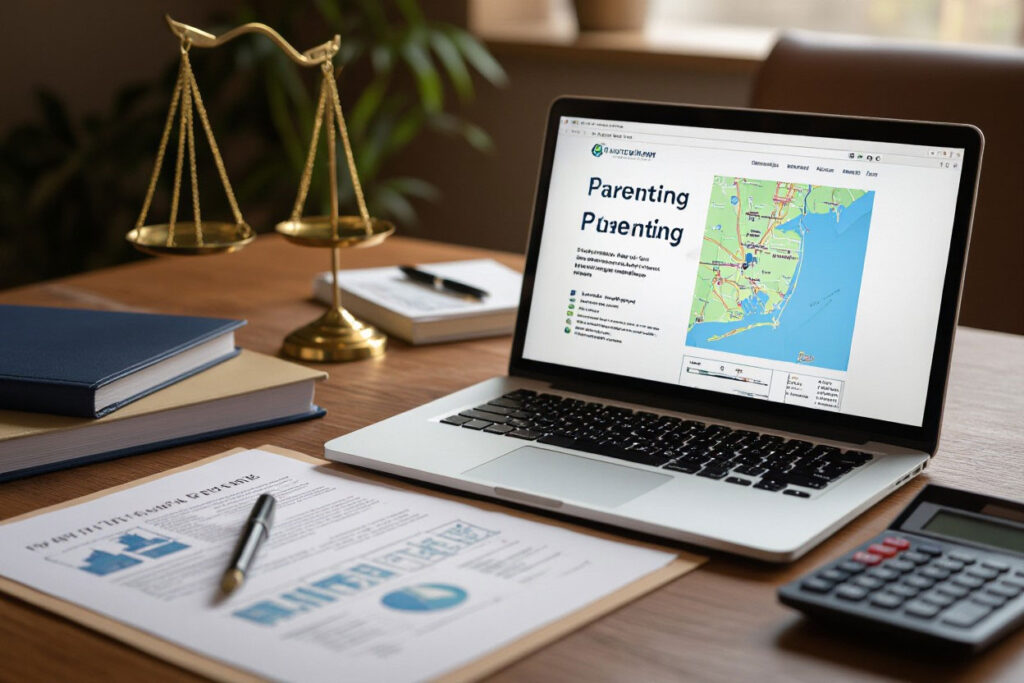
How to Divide the Family Home in a Long Island, NY Divorce
Home »
How to Divide the Family Home in a Long Island, NY Divorce
As a divorce lawyer and family law attorney practicing on Long Island for over 20 years, I’ve found that deciding what to do with the marital home during a divorce is one of the biggest financial choices our clients ever have to make. Should you sell, refinance, or buy out your spouse?
If you’re reading this, there’s a good chance you’re facing one of the hardest questions in a divorce: “What do we do with the house?”
Your Long Island Home Is More Than Just an Asset
For most couples, the marital home is more than just an asset on a spreadsheet. It’s memories, kids’ bedrooms, school districts, and a sense of stability. At the same time, it’s also one of the largest financial pieces of your divorce.
This guide on what to do with the family home in a Long Island, NY divorce breaks down equity, taxes, mortgage rules, and the emotional pieces most people overlook.
It’s important to weigh whether to sell, refinance, or buy out the property when divorcing. This article will guide you through the financial, tax, and emotional factors so you can choose the best option for your future. I’ll explain how market value, mortgage eligibility, equity division, and timing affect each path, outline pros and cons, and offer practical steps to protect your interests and streamline negotiations.
Key Takeaways from This Article
- Assess net equity and outstanding liens to determine whether selling, refinancing, or a buyout is feasible.
- Mortgage qualification matters: credit, income, and debt-to-income ratios determine who can refinance or assume the loan.
- Consider tax and transaction costs. Know how capital gains, closing fees, transfer taxes, and possible tax basis affects proceeds.
- Market conditions and timing affect sale proceeds and the practicality of keeping the property.
- Evaluate ongoing affordability: maintenance, property taxes, insurance, and reserves if one spouse retains the home.
- Document settlement terms clearly. Deed transfers, lien releases, mortgage assumptions, or court orders are required to finalize ownership changes.
- Consult professionals (appraiser, family law attorney, mortgage broker) to value the property and implement the chosen option.
Understanding Divorce and Property Division on Long Island
Overview of Equitable Distribution in New York
New York uses equitable distribution, not an automatic 50/50 split. Nassau County and Suffolk County courts divide marital property fairly based on the length of the marriage, each party’s income, health, and contributions like homemaking or business support. For example, a 12-year marriage with one spouse out of the workforce often yields compensatory adjustments, while short marriages trend toward near-equal splits. You can negotiate settlements that override court apportionment if disclosure is complete and terms are reasonable.
The Role of Real Estate in Divorce Settlements on Long Island, NY
Your home is usually your largest marital asset and drives your options on what to do with in the case of a divorce. You can sell it and split the proceeds; one spouse can buy out the other; or you can co-own it temporarily. We focus on net equity (the sale price minus any liens and selling costs); refinancing hurdles (credit scores, etc.); and tax impacts like the $250,000 single/$500,000 joint capital gains exclusion.
In many cases we model dollar scenarios to compare outcomes and cash flow. For example, if the house is worth $600,000 with a $220,000 mortgage, net equity before costs is roughly $340,000. Assume that the home appraises at $600,000, you generally need to choose one of the following:
- Sell and split net proceeds after paying off the mortgage, including realtor fees, transfer taxes, and outstanding liens
- One spouse buys out the other by paying their share of the net equity and refinancing the mortgage into their name
- You both retain ownership temporarily with a co-ownership agreement specifying payments, maintenance, and an exit timeline.
Factors Affecting Property Division Decisions in a Long Island Divorce
Several variables often determine the best route for your family: child custody and school stability, liquidity needs, each spouse’s credit and mortgage-qualification odds, local market trends (some areas in Nassau and Suffolk can appreciate or depreciate 5 to 10% annually), outstanding liens, and tax exposure such as losing the primary-residence exclusion if use tests fail. We weigh projected carrying costs, repairs, and median days on market when advising whether to sell or transfer ownership.
We run scenario analyses because small changes matter: $200,000 equity minus a 6% commission and $8,000 in repairs can shift a buyout from feasible to impractical. Lenders’ Debt to Income ratios (DTI) and credit bands (e.g., sub-640 credit scores often face higher mortgage interest rates) frequently decide what makes sense for your family.
Some of the scenarios that might guide your options include:
- Immediate liquidity needs for relocation, legal fees, or child expenses
- One spouse’s inability to qualify for a solo mortgage due to a low credit score or high DTI
- Significant capital gains exposure because the property fails the two-of-five-year use test
- The “two-of-five-year use test” is a requirement under U.S. federal tax law (specifically Internal Revenue Code Section 121) that allows homeowners to potentially exclude up to $250,000 (single filers) or $500,000 (married couples filing jointly) of capital gains from the sale of their primary residence.
- Preference for stability (custody, schools) prompting a buyout despite short-term costs
The Marital Home in NY Equitable Distribution Law
Definition of the Marital Home
We treat the marital home as the residence used as the couple’s principal dwelling during the marriage, regardless of whose name is on title. If you bought your home after marriage or improved it with marital funds, courts usually classify it as marital property, whereas a pre-marriage purchase kept separate by clear documentation can remain nonmarital. Because New York applies equitable distribution, we focus on how contributions, timing, and commingling affect whether your home is divided as marital property or separate property.
Assessing the Value of the Marital Home in Nassau and Suffolk Counties
We start the process with a licensed appraisal (which typically costs between $400 and $700 in Nassau and Suffolk counties) and a broker’s comparative market analysis to establish the fair market value of the home. Then, we subtract any outstanding mortgage(s), liens, and anticipated closing costs to determine net equity. You should also factor in recent comparable sales within the last 3-6 months, repairs needed, and local market trends that can swing the home’s value by 5-10%.
Market value differs from forced-sale or “short-sale” values, so I quantify three scenarios:
- Full-market sale
- Sale after two months of repairs
- Lender-negotiated short sale.
For co-ops we also add in board approval delays (often 30-60 days) and maintenance adjustments
For condos single-family homes I stress lot value and neighborhood comps.
New York state law lists 13 equitable-distribution factors, and we map how each (for example, contributions to mortgage, improvements, and tax consequences) affects the valuation split.

Legal Considerations for Selling the Marital Home on Long Island, NY
We advise checking mortgage due-on-sale clauses, outstanding liens, and any temporary orders for exclusive occupancy before listing the home. If you and your spouse disagree, either one of you can seek a court order to sell the home and have the proceeds divided per your agreement or a judge’s distribution, with closing costs, capital gains exposure, and local transfer taxes (for example the NY 1% “mansion tax” on sales over $1,000,000) factored into net proceeds.
Selling a home on Long Island, New York also means handling escrow for repairs, obtaining payoff statements from servicers, and confirming whether third-party mortgages require consent. If children live in the home, a judge may delay the sale to protect custody stability, or order temporary use and occupancy payments. We typically negotiate specific sale timelines, allocate repair responsibilities, and address tax reporting before signing a listing agreement.
Pros & Cons of Selling a House in Nassau and Suffolk Counties
Selling the home is the cleanest split. It converts real estate into liquid assets so you can divide proceeds and close the chapter, but it costs money and time. Agent commissions, closing costs, repairs, and staging can consume $10k–$40k on a midrange home in Nassau and Suffolk. For example, a $400,000 sale with $150,000 equity may leave each spouse far less after fees, yet it prevents long-term co-ownership disputes and mortgage liability.
Financial Implications of Selling Your Marital Home on Long Island
It’s important to analyze net proceeds carefully. Take the sale price minus the mortgage balance, a 6% realtor’s commission, 3% closing costs, and repair/staging expenses. On a $400,000 sale with $250,000 mortgage and $15,000 repairs, you net roughly $99,000, or about $49,500 each.
| Sale Price: | $400,000 |
| Mortgage: | $250,000 |
| Commission: | $24,000 |
| Closing Costs: | $12,000 |
| Repairs: | $15,000 |
| Net: | $99,000 / 2 = $49,500 each |
You also need to check tax rules. The primary residence exclusion ($250k single, $500k married) may apply, and ensure any remaining liens or property tax proration are handled at closing.
Emotional Impact of Selling the Marital Home
Selling the marital home naturally often triggers grief tied to memories, routines, and children’s stability, so the emotional cost can equal or exceed any financial gain or loss. Parents and children frequently face school changes, a moving stress window of 60 to 90 days or longer, and disputes over timing. In many cases I handle, couples who negotiated a clear timeline and temporary housing in their divorce settlement agreement reduced conflict and preserved their co-parenting effectiveness.
We advise that you plan for the emotional logistics. Try to schedule home showings to times when the kids are at school; consider securing a storage unit ($50–$200/month) for sentimental items, and consider mediation to decide what stays. I’ve seen a family selling a 4-bedroom home for $350,000 split tangible keepsakes and avoid court delays by agreeing on a 90-day marketing window, which lowered their daily stress and sped up relocation decisions.
The Process of Selling Your Marital Home During Divorce on Long Island, NY
When you decide to sell, you need to consider listing decisions, disclosures, necessary repairs, and the escrow/closing timeline (typically 30-60 days on the market and 30-45 days until closing after an accepted offer). You must decide who signs the listing agreement, who handles showings, and how proceeds are held in escrow per the divorce settlement. Clear authority prevents derailment of the sale by one party’s objections.
We recommend a pre-listing inspection to budget repairs ($2,000–$10,000 for common fixes, but depending upon the inspection, it could be more), and document who will pay for staging and utilities during marketing. If the mortgage is underwater, you’ll need to explore short sale approval timelines with the lender; otherwise, allocate net proceeds at closing per the separation agreement to avoid post-closing disputes.
How Buyouts Work in Divorce on Long Island
Buyouts are a way for one spouse to keep the home while compensating the other. Typically we calculate net equity (market value minus mortgage and selling costs) and split or set a buyout figure, then implement it via refinance, promissory note, or escrowed cash payment based on timing and affordability.
Understanding the Buyout Process
Start by fixing the home’s value, subtracting the mortgage and expected closing costs, then dividing equity or negotiating a buyout percentage. For example, on a $400,000 house with a $150,000 mortgage, the $250,000 equity would yield a $125,000 equal buyout, which you can fund with a refinance cash-out, a loan, or structured payments over time.
Valuation Methods for the Marital Home
We generally rely on three common valuation methods: a licensed appraisal ($300-$700 typical fee), a Comparative Market Analysis (CMA) from a local Realtor, and a broker price opinion; tax assessments and recent sales also help.
Dig into comparable sales within a 3-6 month window, adjusting for square footage, lot size, renovations, and market trend. Those adjustments can shift value 5-10%. Consider the valuation date (date of separation vs. current market), and get two2 appraisals if offers differ by more than 7% to ensure a defensible, court-ready number.
Legal Considerations for Home Buyouts
You’ll need to address deed transfer methods*, lender requirements to remove a spouse from the mortgage, and the need for a court order or settlement language. If you can’t refinance, a secured promissory note and deed of trust can protect the seller spouse while you work toward permanent removal from liability.
*Deed Transfer Methods
Quitclaim Deed: Transfers the grantor’s interest in a property without any guarantees about the title, making it common for family transfers or when the parties know each other well.
Warranty Deed: Guarantees the grantor has a clear title to the property and protects the grantee against future claims or defects.
We recommend confirming the lender release language before closing because many lenders won’t remove liability without a full refinance. Refinancing typically costs 2-5% of the loan and may change monthly payments significantly. Switching from a 30-year mortgage at 3.5% to a refinance at 6% can raise payments by 60%. It’s important to model scenarios and record any settlement with the court to make enforcement straightforward.

Refinancing Challenges in Today’s Market on Long Island, NY
Requirements for Refinancing During Divorce
Lenders often require full income documentation, a recent appraisal, and a credit score typically above 620 for conventional loans (720+ for best rates). You’ll need a debt-to-income ratio generally under 43%, although some lenders accept up to 50% with compensating factors, and a clear title work showing who’s on the deed. Lenders also look for seasoning on prior loans and may demand the spouse leaving the mortgage be formally removed via refinance or a quitclaim deed.
Current Interest Rates and Market Conditions on Long Island, NY
Mortgage rates moved sharply higher after the 2021–22 cycle and, in recent years, settled in the mid-to-high single digits for 30-year fixed loans at the time of this writing. That shift makes refinancing less advantageous for many divorcing homeowners. Rate volatility, tighter credit overlays, and regional appraisal discrepancies can sink a refinance if comps don’t support your equity claim.
As an example: a $300,000 loan at 5.0% has a 30-year payment around $1,610; at 7.0% that rises to about $1,997, an extra $387 monthly, so you need to weigh monthly savings against closing costs (commonly 2–5% of loan) and any cash needed to buy out an ex-spouse.
Pros & Cons of Refinancing Your Marital Home
Refinancing can lower payments, remove a spouse from the note, or provide cash-out up to roughly 80% Loan to Value (LTV) for buyouts; however, it also brings closing costs, possible higher rates than an assumable loan, and stricter underwriting that can delay your divorce settlement. You’ll want to quantify closing costs and the break-even period before deciding.
For example, if you need $50,000 to buy out a partner, a cash-out refinance at 80% LTV might work but could add $10k–$15k in closing costs and shift your rate higher. Compare refinancing vs. selling by modeling net proceeds, new monthly payments, and the time to recover costs to guide you to the most financially sound option.
Risks of Co-Owning After Divorce
Unfortunately, I’ve seen co-ownership trap former spouses in ongoing obligations: you remain on the mortgage, liable for taxes and insurance. Refinancing to remove a name usually requires you to qualify on your own income and credit. For example, if your mortgage is $2,400/month and your ex stops paying half, you face an unexpected $1,200 increase and possible late fees, collection actions, and damage to your credit score while the property ties up your assets.
Financial Risks of Shared Ownership
I often warn clients that shared ownership multiplies financial exposure: both of you are legally responsible for the mortgage, and one missed payment can trigger late fees (often 4-6% of the payment amount), higher interest if adjustable, and potential foreclosure after prolonged delinquency. You also split maintenance and capital improvements, which can add up to 10s of thousands of dollars, and tax events like depreciation recapture or capital gains can complicate post-sale splits.
Emotional and Legal Complications of Dividing the Marital Home in Divorce
I’ve handled cases where lingering emotional ties block practical decisions: disagreements about renting vs. selling, repairs, or listing price can stall transactions for months. You’ll still negotiate major moves like leasing to a tenant, approving contractors, or accepting an offer, which keeps conflict alive and can affect co-parenting stability and dating life if one party resents the arrangement.
More often than clients expect, unresolved disputes lead to formal legal action. I’ve seen partition actions and buyout fights that cost tens of thousands of dollars and take a year or more to resolve. Mediation or a buy-sell agreement early on can reduce that risk. You should document decision rules, timelines, and dispute processes in writing to avoid costly court proceedings and preserve your financial interests.
Alternatives to Co-Ownership of Your Home After Divorce
There are clear alternatives to co-ownership:
- Sell the home and split the proceeds after paying off the mortgage and closing costs
- One spouse buys out the other using savings, a refinance, or a home equity loan
- Temporarily rent the property with a written exit timeline
Each choice affects taxes, cash flow, and eligibility for the primary residence capital gains exclusion, so you should run net-proceeds scenarios before deciding.
In practice, get an immediate appraisal and three comparable sales, then calculate net proceeds after payoff, realtor fees (usually about 5-6%), and estimated taxes. If you pursue a buyout, structure payments or a lien in writing; if renting, specify revenue split, expense responsibility, and a firm sell-by date. Consulting a tax pro about the $250K/$500K exclusion and a lender on refinancing requirements can prevent costly surprises later.
Tax Implications of Selling or Buying Out Property on Long Island
Understanding Capital Gains Taxes
Transfers incident to a divorce are generally nonrecognition events under IRC §1041, so basis typically carries over. When you later sell, capital gains rules apply. You may exclude up to $250,000 as a single filer or $500,000 if filing jointly under the 2-of-5-year use rule. For example, if your adjusted basis is $150,000 and sale price is $450,000, a single filer would face tax on roughly $300,000 minus any applicable exclusion.
Property Tax Considerations on Long Island
Property reassessments in towns on Long Island can drive unexpected tax spikes after ownership changes. Many jurisdictions exempt transfers between spouses, but if reassessed your bill can jump. For example if the assessed value of your home rises from $300,000 to $500,000 at a 1.25% rate, taxes go from $3,750 to $6,250. In Nassau County, property tax assessments are handled on the county level, but in Suffolk County, property tax assessments are handled by the individual town. You should check local assessor rules and filing deadlines before finalizing a transfer.
Since deadlines vary by state and missing them triggers reassessment, be sure to document the transfer with the county assessor and filing any spouse-transfer or divorce-related exclusion forms immediately. Also verify homestead or senior exemptions that one spouse may retain, and evaluate timing: delaying a conveyance until after closing fiscal-year deadlines can sometimes preserve the current assessment for another year. When in doubt, coordinate with your divorce attorney and a local tax assessor to secure required affidavits and avoid surprises.
Navigating Mortgage Liabilities in Divorce
Responsibility for Existing Mortgages
If both names are on the mortgage, the lender still holds you and your ex legally responsible regardless of what a divorce decree says. I tell clients that a court order assigning payments doesn’t remove lender liability. For example, a 30‑year mortgage with a $250,000 balance will still show both borrowers to the servicer, so missed payments by one spouse can trigger collections, late fees, and credit reporting for both.
Options for Handling Mortgage Debt
You can sell and split proceeds, have one spouse refinance into a sole loan, pursue a loan assumption (common with VA loans), or negotiate a deed transfer plus indemnification in the settlement. You should weigh refinancing thresholds like your credit score and Debt to Income ratio against timing and costs.
Use current market value, outstanding balance, and closing costs. For example, a home valued at $400,000 with $200,000 mortgage yields $200,000 equity, so a 50/50 split requires a $100,000 cash buyout plus roughly 2-6% in transaction costs if you refinance or sell. Refinancing timelines are usually 30-45 days on Long Island and lenders will require income documentation. A loan assumption can avoid refinancing but often needs lender approval and may be limited to specific loan types.
Impact on Your Credit Score
Missed mortgage payments affect both parties’ credit if both are on the note. A 30‑day mortgage delinquency can drop your credit score substantially, often 60-110 points, while foreclosures may cut 200-300 points off your score, depending on your starting credit and other factors.
Consistent on‑time payments can rebuild scores over 12-24 months, and removing a nonpaying co‑borrower via refinance or assumption stops future damage. In one case, a client’s score rose 80 points within 14 months after refinancing into a solo loan and making timely payments. Conversely, failing to address shared liability left another client with ongoing credit risk despite a divorce decree assigning the debt to their ex.
Timing the Sale or Purchase of the Marital Home on Long Island
Market Conditions and Timing
Track local inventory, mortgage rates, and days-on-market. With mortgage rates bouncing around 6-7% after 2022–23, buyer demand tightened and average Days on Market (DOM) often stretched from 30 to 60+ days in many areas on Long Island. If you list in the spring (April–June) you may see 10-25% more buyer activity because families with children want to be settled before the start of school (and it’s just nicer weather to house shop). If you’re buying, low inventory can push prices up 5-15% spring versus winter.
Emotional Considerations for Timing
I’ve seen couples delay listing 6-18 months because the house holds family memories, but that delay frequently increases carrying costs (mortgage, taxes, and maintenance) by thousands monthly. You should weigh the emotional benefit of staying against the measurable costs and how those costs affect your settlement options.
When emotions drive timing, I recommend a short decision deadline: set 30-90 days to decide whether one party will stay, sell, or seek a buyout. This prevents indefinite holding that can erode equity. For example, a $300,000 mortgage at 6.5% costs roughly $1,900/month principal and interest (not to mention Long Island’s high taxes). Involving a neutral mediator or therapist can help separate financial facts from attachment-driven choices so you don’t trade liquidity for sentiment without seeing the numbers.
Best Practices for Timing Decisions on Your Family Home
Getting a current appraisal, a CMA from an agent, and a pre-listing inspection before setting dates. Closing typically takes 30-60 days and refinancing or a buyout can take 45-90 days. You should factor seller costs (agent fees and other closing costs) and anticipated moving costs into your timeline so financial outcomes match your emotional goals.
For example, if the house appraises at $400,000 with $200,000 equity and you’re splitting it 50/50, one party needs roughly $100,000 plus transaction costs to buy out the other or refinance at up to 80% LTV ($320,000). Run these scenarios with lenders and attorneys early so you know whether a sale, refinance, or deferred listing meets both your cash needs and your family timing. You should typically target a 60-120 day window for predictable results.
Mediation and Negotiation in Property Division on Long Island
I push parties toward mediation and targeted negotiation because it reduces costs and preserves your options. In my experience, mediators can cut legal fees by 40-70% and speed resolution to 1-3 months instead of 12-24 months in court. Get your current appraisal, mortgage statement, tax returns, and a net-equity spreadsheet so you can model sell, refinance, and buyout scenarios quickly.
The Role of Mediation in Your Divorce
Mediation places you in control of timing and outcomes. Mediated settlements resolve in over 70% of cases and often keep the home intact. Your mediator can guide you through split-equity models. For example, with $200,000 net equity one party may assume the mortgage and pay $100,000 over five years at a set rate, which reduces moving costs and simplifies tax timing compared with an immediate sale.
When to Consider Litigation in Your Divorce
I recommend litigation as a last resort when one party hides assets, refuses disclosure, or presents safety concerns, because courts can compel full financial disclosure and order liquidation or sales. You should expect litigation to take 12-24 months and to add legal fees. You should pursue it only when negotiation repeatedly fails or the other side’s conduct makes settlement unrealistic.
Expect your costs to rise exponentially when you litigate. Attorney rates often run $200–$500/hour and contested property litigation commonly exceeds $10,000-$50,000 in fees. Courts may order appraisals or forensic accountants and can mandate a forced sale. I weigh these expenses against any potential recovery. If the disputed asset’s value falls below projected litigation costs, I advise settling or using targeted motions instead of a full trial.
For more information, read How To Enforce Court Orders & Protect Property After Divorce on Long Island, NY

Case Studies: Real-Life Examples of Property Division
- Case 1: Quick sale to split equity: a Nassau County home sold for $520,000 with a $320,000 mortgage. The seller paid 8% in closing costs ($41,600) and $6,000 in repairs, leaving $152,400 net proceeds. The 50/50 split produced $76,200 each; sale-to-disbursement in 58 days.
- Case 2: Refinance plus cash-out buyout: a $450,000 home in Suffolk County had a $220,000 mortgage. The wife refinanced to a $300,000 loan at 4.5%, paid her spouse $65,000 and $5,000 closing costs, which left a $10,000 reserve and she closed in 45 days. Her monthly payment rose $350.
- Case 3: Buyout with mortgage qualification: $650,000 Suffolk County property with $230,000 balance on the mortgage (net equity $420,000). The spouse who kept the home obtained a $350,000 refinance and paid the other spouse $185,000 lump sum using a 90-day bridge for timing.
- Case 4: High-conflict escrowed buyout: $400,000 appraisal on a Nassau County home with a $180,000 mortgage. They each agreed to a buyout of $110,000 which was placed in escrow pending dispute resolution. Legal fees ran $15,000 and reduced the final payout to $95,000. Escrow was released in 120 days.
- Case 5: Co-ownership then delayed sale: Exes co-owned 3 years; value rose 14% from $300,000 to $342,000; one partner paid 60% of $18,000 maintenance/mortgage contributions ($10,800) and was reimbursed before a 50/50 split of remaining proceeds at sale.
Professional Resources for Divorcees
The Importance of Hiring an Experienced Long Island Divorce Attorney
I strongly advise retaining an experienced family-law attorney who handles real estate splits, child custody and spousal and child support. Contested cases often take 9-18 months versus 3-6 months for uncontested ones. Look for counsel with experience negotiating buyouts, drafting QDROs for retirement division, and assessing mortgage liabilities. Expect retainers commonly between $2,000-10,000 depending on the complexity of your case.
Engaging Financial Advisors
I work with Certified Financial Planners (CFPs) and Certified Divorce Financial Analysts (CDFAs) to model outcomes, quantify tax effects, capital-gains exposure, and mortgage qualification. I ask them to run cash-flow projections for 6, 12 and 24 months, value retirement rollovers using QDROs, and compare net proceeds after typical selling costs of 6-10%. That level of analysis turns emotional choices into real numbers you can act on.
For example, I’ve seen a CDFA show a stay-at-home spouse how a $300,000 sale with 6% costs and a $150,000 mortgage yields about $120,000 net after taxes and fees; alternatively, a buyout might require a 620-680 credit score to refinance and a 20%+ equity transfer. These advisors generally prepare worst-, base-, and best-case scenarios so you can negotiate from data, not emotion.
Counseling Resources for Emotional Support
I often encourage individual therapy, mediation where appropriate, and peer support to help reduce conflict and improve decision-making. Typical private therapy costs run $75-200 per session and support groups like DivorceCare and other divorce recovery support groups are often 13-week programs. I recommend checking your employer’s Employee Assistance Program (EAP) if they have it for free short-term counseling and local clinics for sliding-scale options so you can get help immediately without large out-of-pocket bills.
I often refer clients to child-focused therapists and co-parenting workshops. Studies show 6-12 sessions of targeted therapy can reduce parental conflict and improve child adjustment to the divorce. I also suggest structured interventions like 8-week co-parenting classes and online platforms offering counseling at lower cost when scheduling or transportation are barriers.
For more information, read, How to Protect Your Mental Health During Your Divorce
Consider All Your Options When Dividing the Family Home in Your Long Island, NY Divorce
Weigh financial, tax and emotional factors when deciding whether to sell, refinance, or buy out your marital home on Long Island, NY. Assess equity, mortgage qualifications, tax consequences, and long-term goals with you so you can choose the option that preserves value and stability for your future.
We Can Help You Divide Your Family Home the Best Way for Your Family on Long Island, NY
The experienced divorce and family law attorneys at Hornberger Verbitsky, P.C. can help you navigate the property division of your marital home and protect your future. Contact us today at 631-923-1910 or fill out the short form on this page for a free consultation and case evaluation.
GET YOUR FREE CONSULTATION TODAY
Call 631-923-1910 or fill in the form below
Get your complimentary consultation and case evaluation with our experienced attorneys today.
Your attorney will describe the many options available and determine together which is the right solution for you. By the end of this conversation, we’ll all understand how we can best help you to move forward.
No Cost or Obligation
There is no cost or obligation for this initial consultation. It is simply an opportunity for us to get to know each other, answer your questions and learn if Hornberger Verbitsky, P.C. is right the right law firm for you. Give us a call at 631-923-1910 or fill in the short form below for your free consultation and case evaluation.
About the Author
Robert E. Hornberger, Esq., Founding Partner, Hornberger Verbitsky, P.C.
- Over 20 years practicing matrimonial law
- Over 1,000 cases successfully resolved
- Founder and Partner of Hornberger Verbitsky, P.C.
- Experienced and compassionate Long Island Divorce Attorney, Family Law Attorney, and Divorce Mediator
- Licensed to practice law in the State of New York
- New York State Bar Association member
- Nassau County Bar Association member
- Suffolk County Bar Association member
- “Super Lawyer” Metro Rising Star
- Nominated Best of Long Island Divorce Attorney four consecutive years
- Alternative Dispute Resolution Committee Contributor
- Collaborative Law Association of New York – Former Director
- Martindale Hubbell Distinguished Designation
- America’s Most Honored Professionals – Top 5%
- Lead Counsel Rated – Divorce Law
- American Institute of Family Law Attorneys 10 Best
- International Academy of Collaborative Professionals
- Graduate of Hofstra University School of Law
- Double Bachelor’s degrees in Philosophy, Politics & Law and History from SUNY Binghamton University
- Full Robert E. Hornberger, Esq. Bio

Frequently Asked Questions About Dividing the Family Home in Divorce
Q: How do I decide whether to sell the marital home, refinance it to remove a spouse, or do a buyout?
A: Evaluate your financial capacity, long-term goals, and the house’s marketability. Key steps: obtain a current appraisal, calculate net equity (market value minus outstanding liens and estimated closing costs), compare each option’s cash flow and tax effects, check who can qualify for a mortgage on a single income, and weigh nonfinancial factors such as child custody, school district, and emotional attachment. If neither of you can afford or qualify to keep the home, selling often minimizes shared liability. If one party can qualify and wants to stay, a refinance or structured buyout may preserve homeownership. Consult an experienced divorce lawyer and a financial advisor to model net proceeds and ongoing affordability for each route.
Q: How is the home value determined and how will equity be split?
A: Use a licensed appraisal for an authoritative market value. Comparative market analyses (CMAs) from real estate agents provide faster estimates but are less formal. Subtract outstanding mortgage balances, tax liens, and estimated selling costs (agent commission, repairs, closing fees) to find your net equity. Equitable distribution and your divorce decree will determine how equity is divided. Document calculations and use escrow or court supervision for distribution to prevent future disputes.
Q: What are the tax consequences of selling, refinancing, or executing a buyout?
A: Sale: If the home qualifies as a principal residence under IRS rules, a single filer may exclude up to $250,000 ($500,000 for married filing jointly) of capital gain if ownership and use tests are met but timing and prior use can affect eligibility. Costs of a sale reduce your taxable gain. Refinancing: moving a mortgage or removing a name is not a taxable event although the mortgage interest deduction allocation may change. Buyout: a title transfer between spouses incident to divorce is generally nonrecognition of gain (no immediate tax), but a future sale by the recipient may trigger capital gains tax based on the original basis. Always confirm with a tax advisor about basis adjustments, depreciation recapture (if rental use occurred), and local transfer tax rules.
Q: How does refinancing to remove a spouse from the mortgage work and what do lenders require?
A: The spouse who will keep the house must apply for a new mortgage in their own name (or qualify with a co-signer) and meet lender requirements for credit score, income documentation, debt-to-income ratio, and have assets for closing. The lender may order an appraisal and title search. Refinancing pays off the existing joint loan and the title is retitled to the sole borrower. Costs include closing fees and potential prepayment penalties. If the departing spouse’s name stays on the title but is removed from the mortgage, they still face liability unless the title is also changed. Conversely, removing a name from the mortgage without removing it from the title is uncommon and risky for the lender.
Q: How is a fair cash buyout calculated and what are common financing methods?
A: A buyout typically equals the departing spouse’s share of the net equity in the home. This is calculated by the agreed market value minus liens and selling costs and then multiplied by that spouse’s ownership percentage. Parties may deduct an agreed present-value discount if one spouse keeps the home and assumes future market risk. Financing options include: (1) the retaining spouse refinances to cash out the departing spouse’s equity, (2) obtaining a home equity line of credit or second mortgage, (3) selling other marital assets to raise cash, or (4) structuring a promissory note where the home secures payments. Include repayment terms, interest rate, amortization schedule, default remedies, and a security instrument in the settlement documents.
Q: What are options if neither spouse can qualify to keep the house or the mortgage is underwater?
A: Consider selling the property and splitting proceeds or covering any shortfall if feasible. If the mortgage balance exceeds market value, options include negotiating a short sale with the lender, applying for a deed in lieu of foreclosure, pursuing a loan modification, or converting the property to a rental to bridge cash flow until markets improve. Temporary co-ownership agreements can assign payment responsibilities and occupancy rights until a sale is completed. Consult an attorney about liability allocation and potential deficiency judgments in your jurisdiction before electing a loss-mitigation route.
Q: What legal documents and provisions should be included to govern occupancy, maintenance, and future sale?
A: Include a written settlement agreement or court order that addresses: who has exclusive occupancy and for how long; responsibility for mortgage payments, taxes, insurance, utilities, and routine maintenance; how major repairs will be funded; terms for one spouse buying out the other or for selling; allocation of sale proceeds and payment of closing costs; right of first refusal, appraisal/valuation method for future sale or buyout, and dispute resolution (mediation/arbitration). Use clear deed language for transfers (quitclaim or warranty deed) and record documents in the county to effect the title changes. Ensure the agreement specifies enforcement mechanisms and any contingencies tied to financing or market conditions.
"Going through a divorce is never easy, but Hornberger Verbitsky made the process smooth, respectful, and solution-focused. I worked closely with attorney Anne Marie Lanni, who was outstanding in every way. She resolved conflicts with professionalism, communicated clearly and effectively, and authored an agreement that was thoughtful and fair. Her attention to detail and calm, competent approach gave me real peace of mind.
Lead attorney Rob was also fantastic—personable, friendly, and genuinely supportive throughout. He made a tough process feel manageable and always took time to check in and make sure I felt heard and supported.
The team’s commitment to a problem-solving approach, their impressive professional network, and even their supportive nature and community values really set them apart. I felt like more than just a case—I felt cared for and well-represented.
Highly recommend Hornberger Verbitsky if you want trusted guidance and a team that gets results with integrity and compassion."




















































